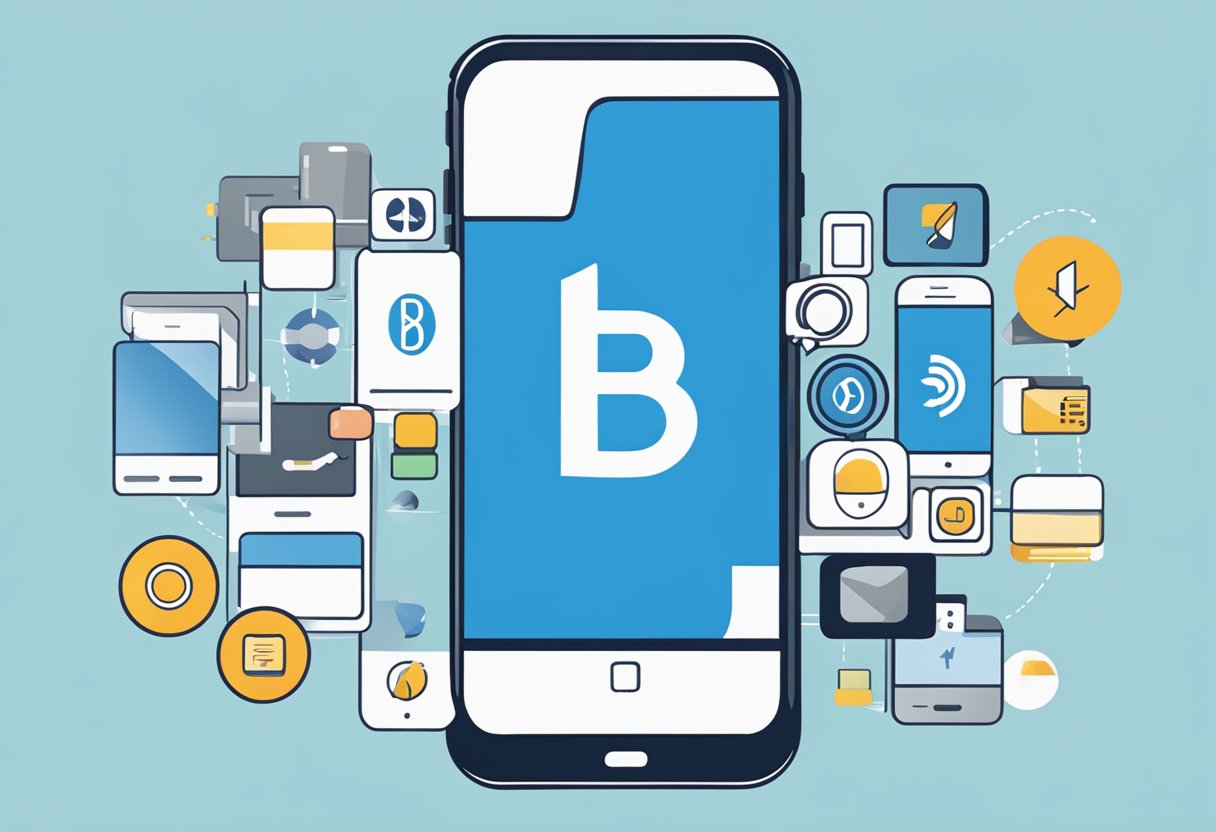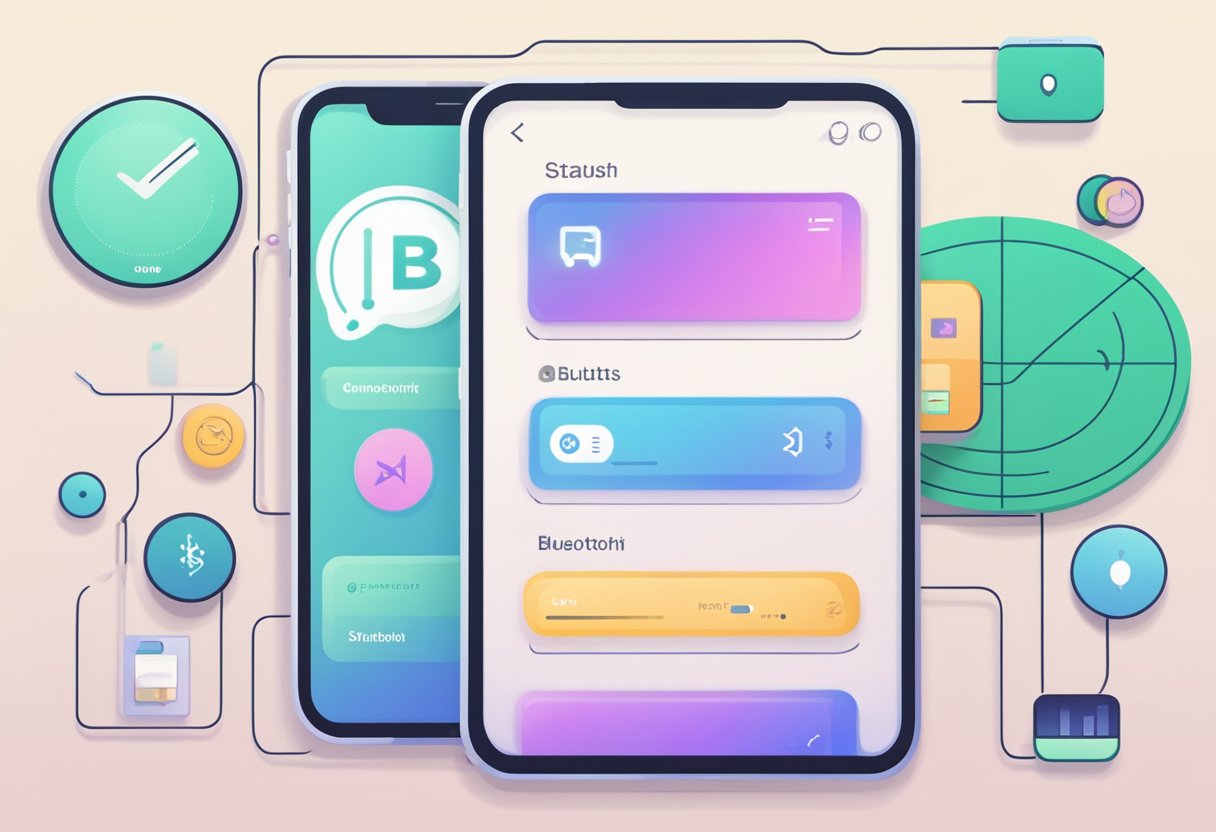React-native-bluetooth-status is a library that provides a simple way to check the Bluetooth status of a device in a React Native application. It allows developers to easily determine whether a device’s Bluetooth is turned on or off, and to take action accordingly. With the increasing popularity of Bluetooth-enabled devices, this library has become a valuable tool for React Native developers.

One of the main advantages of using React-native-bluetooth-status is its simplicity. The library is easy to install and use, and provides a straightforward API for checking the Bluetooth status of a device. This makes it an ideal choice for developers who want to quickly add Bluetooth functionality to their React Native applications without having to write complex code.
Another benefit of using React-native-bluetooth-status is its compatibility with both iOS and Android devices. The library is designed to work seamlessly with both platforms, allowing developers to create cross-platform applications that can communicate with Bluetooth-enabled devices. This makes it a versatile tool for developers who want to create applications that can be used on a wide range of devices.
Índice De Conteúdo
Getting Started with React Native Bluetooth

React Native Bluetooth is a powerful library that allows developers to easily add Bluetooth functionality to their React Native applications. This section will provide a brief overview of the steps required to get started with React Native Bluetooth.
Installation
Before you can start using React Native Bluetooth, you will need to install it in your project. The easiest way to do this is by using npm. Simply open a terminal window and run the following command:
npm install react-native-bluetooth-status --save
This will download and install the latest version of React Native Bluetooth and add it to your project’s package.json file.
Permissions and Requirements
In order to use React Native Bluetooth, you will need to ensure that your app has the necessary permissions and meets the minimum requirements.
Permissions
React Native Bluetooth requires the following permissions:
- BLUETOOTH
- BLUETOOTH_ADMIN
These permissions can be added to your app’s AndroidManifest.xml file using the following code:
<uses-permission android:name="android.permission.BLUETOOTH" />
<uses-permission android:name="android.permission.BLUETOOTH_ADMIN" />
Requirements
React Native Bluetooth requires a minimum API level of 18 for Android and iOS 10.0 for iOS. Additionally, it is recommended that you have a device with Bluetooth 4.0 or higher for the best performance.
In conclusion, getting started with React Native Bluetooth is a simple process that involves installing the library and ensuring that your app has the necessary permissions and requirements. With these steps completed, you will be able to easily add Bluetooth functionality to your React Native app.
Bluetooth Status Handling

React-native-bluetooth-status provides a simple way to check and handle the Bluetooth status of a device. This section will cover two main aspects of Bluetooth status handling: checking the Bluetooth status and listening to Bluetooth state changes.
Checking Bluetooth Status
Before performing any Bluetooth operations, it’s important to check whether Bluetooth is enabled on the device. React-native-bluetooth-status provides a simple method to do this: BluetoothStatus.getState(). This method returns a promise that resolves with the current Bluetooth state.
import BluetoothStatus from 'react-native-bluetooth-status';
BluetoothStatus.getState().then(state => {
if (state === 'on') {
// Bluetooth is enabled
} else {
// Bluetooth is disabled
}
});
Listening to Bluetooth State Changes
React-native-bluetooth-status also allows you to listen to changes in the Bluetooth state. This can be useful to update your UI or perform some action when the Bluetooth state changes. To listen to Bluetooth state changes, you need to add an event listener to the BluetoothStatus object.
import { DeviceEventEmitter } from 'react-native';
import BluetoothStatus from 'react-native-bluetooth-status';
DeviceEventEmitter.addListener('bluetoothStateChanged', state => {
if (state === 'on') {
// Bluetooth is enabled
} else {
// Bluetooth is disabled
}
});
// Don't forget to remove the listener when you don't need it anymore
DeviceEventEmitter.removeListener('bluetoothStateChanged');
In summary, React-native-bluetooth-status provides a simple way to check and handle the Bluetooth status of a device. By checking the Bluetooth status and listening to Bluetooth state changes, you can ensure that your app behaves correctly in all situations.
Integrating with React Native Components

React-native-bluetooth-status can be easily integrated with React Native components. This section will provide an overview of how to use this library with React Native components.
Using with Hooks
React-native-bluetooth-status can be used with React Native Hooks to manage Bluetooth status. The useBluetoothStatus hook can be imported from the library and used in a functional component to manage the Bluetooth status.
import { useBluetoothStatus } from 'react-native-bluetooth-status';
function BluetoothStatus() {
const { isEnabled, isConnecting, isConnected, isDisconnecting } = useBluetoothStatus();
return (
<View>
<Text>Bluetooth Enabled: {isEnabled.toString()}</Text>
<Text>Bluetooth Connecting: {isConnecting.toString()}</Text>
<Text>Bluetooth Connected: {isConnected.toString()}</Text>
<Text>Bluetooth Disconnecting: {isDisconnecting.toString()}</Text>
</View>
);
}
Context API Integration
React-native-bluetooth-status can also be integrated with the React Native Context API to manage Bluetooth status across multiple components. The BluetoothStatusProvider component from the library can be used to wrap the application and provide access to the Bluetooth status context.
import { BluetoothStatusProvider } from 'react-native-bluetooth-status';
function App() {
return (
<BluetoothStatusProvider>
<View>
<BluetoothStatus />
</View>
</BluetoothStatusProvider>
);
}
Once the BluetoothStatusProvider is wrapped around the application, the Bluetooth status context can be accessed from any component using the useContext hook.
import { useContext } from 'react';
import { BluetoothStatusContext } from 'react-native-bluetooth-status';
function BluetoothStatus() {
const { isEnabled, isConnecting, isConnected, isDisconnecting } = useContext(BluetoothStatusContext);
return (
<View>
<Text>Bluetooth Enabled: {isEnabled.toString()}</Text>
<Text>Bluetooth Connecting: {isConnecting.toString()}</Text>
<Text>Bluetooth Connected: {isConnected.toString()}</Text>
<Text>Bluetooth Disconnecting: {isDisconnecting.toString()}</Text>
</View>
);
}
Using the Context API with React-native-bluetooth-status can help manage Bluetooth status across multiple components and simplify the process of managing Bluetooth connections in a React Native application.
Error Handling and Debugging
Common Issues
When using react-native-bluetooth-status, there are a few common issues that developers may encounter. One of the most common issues is a failure to connect to a Bluetooth device. This can be caused by a number of factors, including incorrect device pairing, low battery, or interference from other devices.
Another issue that developers may encounter is a failure to discover nearby Bluetooth devices. This can be caused by a number of factors, including low battery, interference from other devices, or incorrect device settings.
Debugging Techniques
To debug issues with react-native-bluetooth-status, developers can use a number of techniques. One of the most effective techniques is to use logging to track the flow of data through the application. This can help developers identify where issues are occurring and what may be causing them.
Another effective technique is to use debugging tools such as a debugger or a profiler. These tools can help developers identify performance issues and other problems that may be affecting the application.
In addition, developers can also use error handling techniques such as try-catch blocks to catch and handle errors that may occur during application execution. This can help ensure that the application continues to run smoothly even in the face of unexpected errors.
Overall, by using a combination of debugging techniques and error handling strategies, developers can ensure that their applications using react-native-bluetooth-status are reliable and performant.

